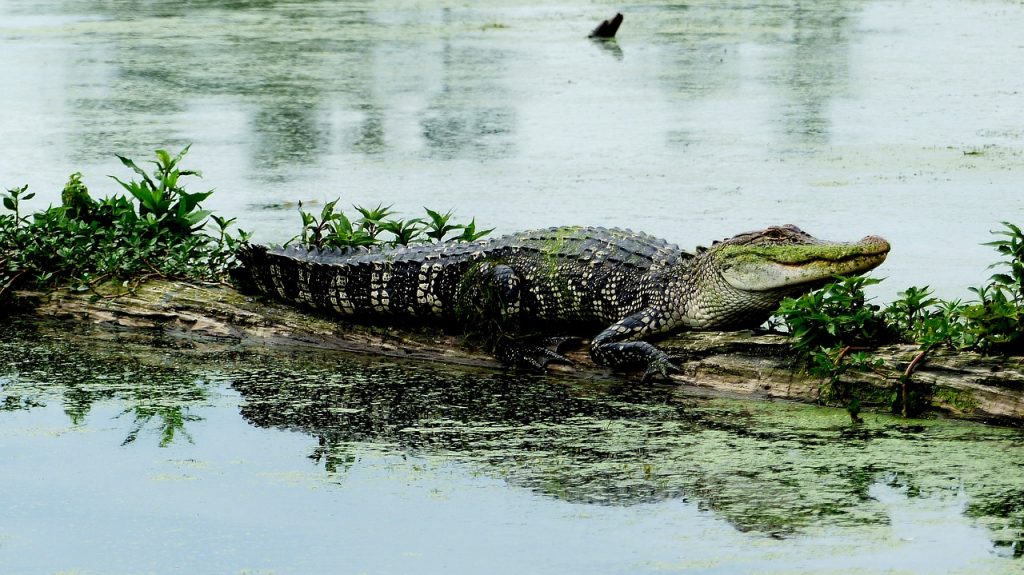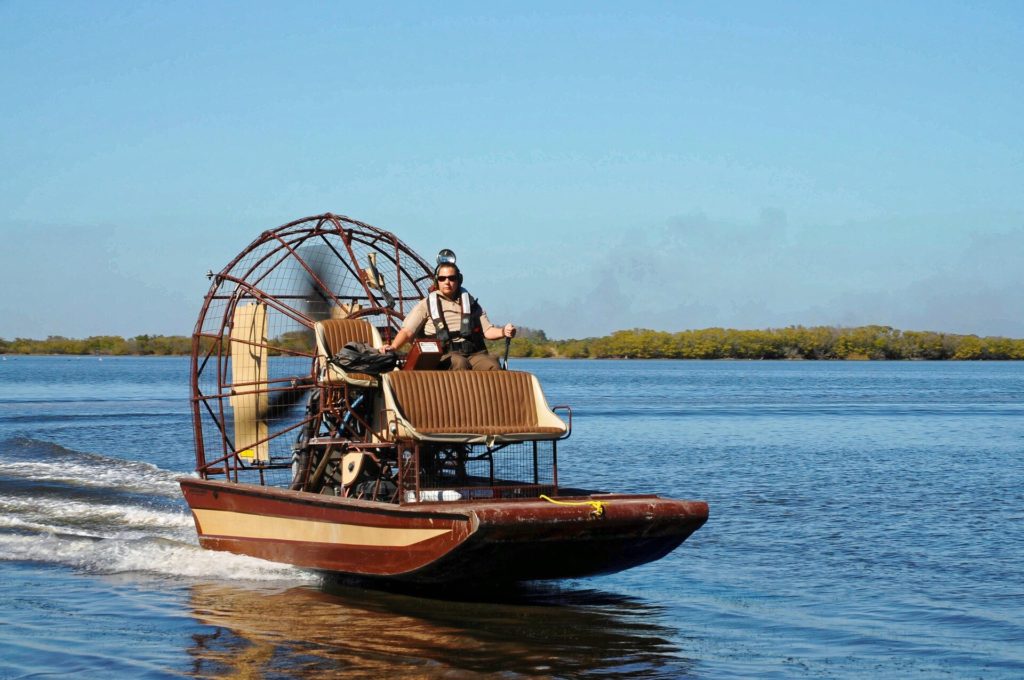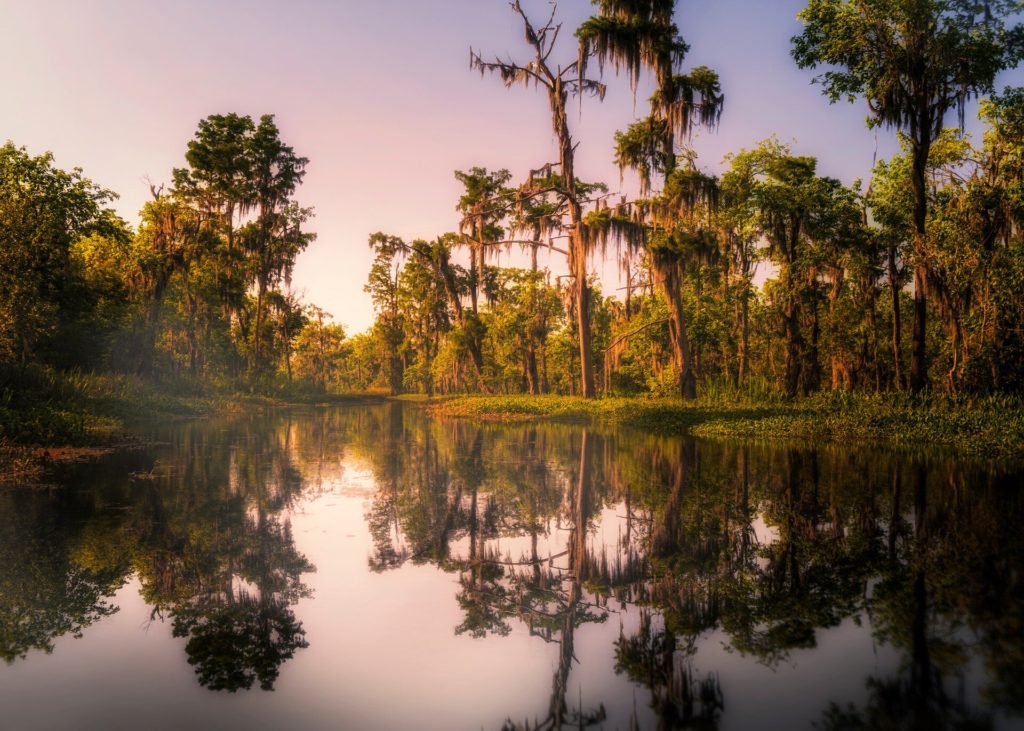An In-Depth Look at the Reptiles of New Orleans’s Swamp Land
Deep in the murky marshes and the dark bayous of New Orleans, Louisiana’s swamp lands lie all sorts of mysterious wildlife and plant life, too. Come with us on this journey, a series look deep into the reptiles of the swamps of Louisiana.
In this article, we will feature just some of the reptiles of New Orleans swamps. But first, let’s remind ourselves what makes a reptile a reptile, indeed.
The Characteristics of a Reptile
What exactly is a reptile? Let’s go back to childhood and remember those science lessons again. A reptile according to Dictionary.com
“Any cold-blooded vertebrate of the class Reptilia, comprising the turtles, snakes, lizards, crocodilians, amphisbaenians, tuatara, and various extinct members including the dinosaurs.”
dictionary.com
Here are a few additional things to help you recognize what is and is not a reptile:
- Usually, have dry, scaly skin
- Most lay eggs, although not all.
- Have 4 legs
- Breathe with lungs
Relatively simple, right? So, now let’s get into the most notable reptiles of the New Orleans, Louisiana Swamplands.
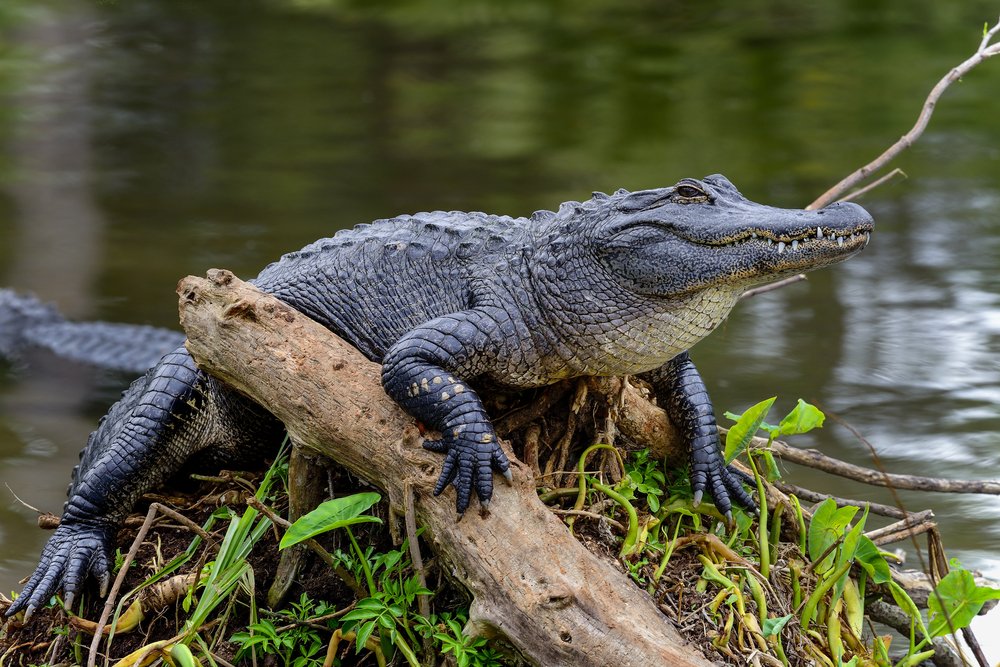
The American Alligator
As the largest reptile in North America, these prehistoric reptiles are not to be regarded lightly. They are full of teeth and have an extraordinarily powerful tail for whipping. There are approximately 2 million American alligators in Louisiana.
Alligators can live up to 100 years, but most only make it 70 years. Today’s average female alligator grows to about 9 feet long. The males can reach 13 feet and weigh more than 500 pounds. The longest recorded alligator was found at 19feet and 2 inches.
This is what most people want to see when they go on a Louisiana swamp boat tour. Basking in the sun, swimming through the dark waters, or lurking in the marshes, the alligator is a magnificent creature.
Two Types of Turtles
Alligator Snapping Turtle
This turtle is one of the heaviest turtles in the world. It has mighty jaws like that of an alligator and ridges on the shell resembling the skin of a gator. Hunting at night, they will eat just about anything. They are almost entirely carnivorous and prefer fish, and they only live about 12 years.

Red-Eared Slider
This is the most popular pet turtle in America and in the world. It gets its name from the red line around its ears and the ability to slide into the water quickly. Commonly seen basking on logs, the sun strengthens their shells and keeps the algae growth to a minimum. The red-eared slider lives 50 years.
Water Snakes
Banded Water Snake
A non-venomous water snake, this snake is gray to brown in color with dark cross-bands. It will grow to approximately 2 – 3.5 feet long. They are often mistaken for the cottonmouth because the pattern and coloring are so dark, you can barely detect it. They have flat heads and release a terrible musk to get rid of predators.
Cottonmouth
Also known as the water moccasin, this is the only venomous water snake in the U.S. It lives in the swamps and grows 15 to 55 inches in length. Most cottonmouths are nearly all black. The cottonmouth also has an identifiable white line from the eye to the corner of the mouth.
Diamond-back water snake
This snake is a semi-aquatic one. You may see one in the swamps hanging from a tree branch over water to catch their dinner. Their bite is quite painful due to the teeth they have for catching fish. However, they are good to have around because they are the natural predator of the venomous cottonmouth.
Land Snakes
Western Rat Snake
One of Louisiana’s black snakes, these non-venomous snakes like to climb in trees and swim too. So actually, it is a snake that lives on land but loves the water as well. They can grow to 6 feet long. They are glossy with a white chin, lips, and throat.
Coachwhip
This snake is active during the day, they like dryland areas. They will grow to between 3 and 7 feet in length and are non-venomous. The coachwhip gets its name from the scale pattern and the appearance of a braided tail. They are dark on the head and become pale near the tail, with a pinkish underbelly. They are known for playing dead when captured, so be aware!
Copperhead
One of Louisiana’s venomous snakes, you will find it lurking camouflaged in wooded areas. The measure about 14 to 45 inches and are usually tan or pale gray. The brown and pink or orange hourglass pattern banding the body in design makes it easy to identify if you see one.
Eastern Hog-nosed Snake
These non-venomous snakes are found along the margins of the wetlands. They grow 2-3 feet and are various colors. These hog-nosed snakes will act like a cobra and spread their necks in defense. If that doesn’t scare off offenders, they will play dead.
Mississippi Green Water Snake
This dark-colored, heavy-bodied snake is greenish-brown with obscure markings. The underbelly has yellow half-moon shaped markings. When on the defense, the snake will bite and emit a foul musk, but they are not venomous.
Racer
Five different racers live in the Louisiana area, all of which are non-venomous. They include the Southern Black Racer, the Black-masked Racer, Yellow-bellied Racer, the Tan Racer, and the Buttermilk Racer.
Speckled King Snake
As one of the constricting snakes, these large reptiles can grow 12 to 24 inches in length. It has a series of black, white, yellow, or red rings, but it looks speckled. The snout is red, and they are found under pine logs.
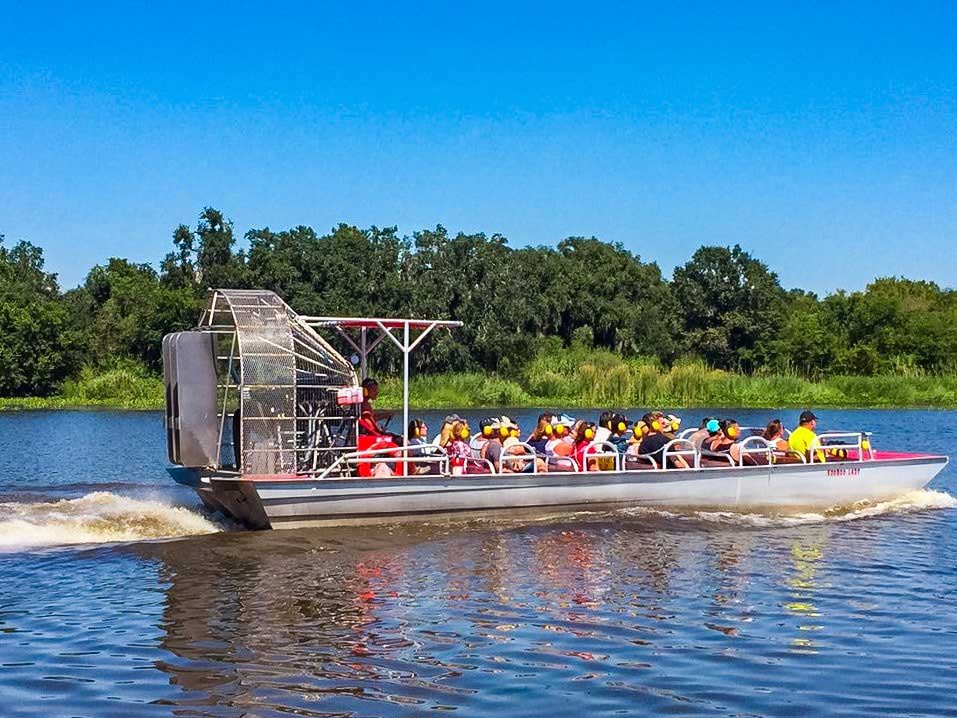
Witness the Wildlife on a Bayou Swamp Boat Tour
Sound interesting? You have a love of reptiles and wildlife? Well, we do too. Here at Bayou Swamp Tours, our boat Captains will guide you through the mysterious swamplands on the lookout for wildlife of all sorts.
If you are lucky, you may even get to hold a baby alligator. In fact, you can interact with all the living creatures, including raccoons, wild hogs, magnificent birds, and so much more. Our experienced Captains know how to combine excitement and nature into one fascinating tour of the swamps.
Contact Bayou Swamp Tours to book your tour today. We are waiting to take you on the nature ride of a lifetime.

